Feb 09, 2024
In the realm of crafting and digital design, the conversion from JPG to SVG is often sought after for its potential to create scalable, high-quality images suitable for various applications. However, when it comes to digitizing for cutting machines like Cricut, Silhouette, or others, relying solely on JPG to SVG conversion may not always yield the desired results.
Understanding the Difference: JPG vs. SVG
Before we explore the challenges of converting JPG to SVG, let's clarify the fundamental differences between these two file formats:
-
JPG (Joint Photographic Experts Group): JPG is a raster image format commonly used for photographs and complex images. It consists of a grid of pixels, and when you enlarge a JPG image, you may encounter pixelation or loss of quality due to its fixed resolution.
-
SVG (Scalable Vector Graphics): SVG is a vector-based image format that uses mathematical equations to define shapes and paths. Unlike JPG, SVG images can be scaled infinitely without losing quality, making them ideal for digital crafting and design projects.
The Limitations of JPG Files:
JPG (Joint Photographic Experts Group) files are raster images, composed of pixels arranged in a grid. While JPGs are suitable for storing photographs and complex images with intricate details, they lack the scalability and editability required for precise cutting machine operations. Here's why:
-
Pixelation Issues: When enlarging a JPG image, the pixels become more visible, resulting in a loss of quality and sharpness. This pixelation can significantly impact the accuracy and intricacy of designs, especially when resizing for different projects or materials.
-
Inability to Scale: Since JPGs are resolution-dependent, resizing them beyond their original dimensions can lead to distortion and blurriness. This limitation makes it challenging to maintain consistency and precision, crucial factors in digitizing for cutting machines.
Why SVG is Preferred for Cutting Machines:
On the other hand, SVG files are vector graphics, comprised of mathematical equations that define shapes, lines, and curves. This vector format offers several advantages over raster images like JPGs:
-
Scalability: SVG files can be scaled infinitely without loss of quality or detail. This scalability ensures that designs remain crisp and precise, regardless of size, making them ideal for cutting intricate patterns and shapes with cutting machines.
-
Editability: SVG files are editable using vector graphic software like Adobe Illustrator or Inkscape. This versatility allows users to customize designs, adjust shapes, and modify paths to suit specific project requirements, enhancing flexibility and creativity in the digitizing process.
Challenges with JPG to SVG Conversion:
While it might seem convenient to convert JPG images to SVG for use with cutting machines like Cricut, several challenges can arise during the conversion process:
-
Loss of Detail: Converting raster images to vector format often involves simplifying complex details, leading to a loss of intricacy and precision in the final SVG output. This loss of detail can compromise the quality and accuracy of the design, particularly for intricate or fine-scale patterns.
-
Tracing Errors: Automated tracing algorithms used in conversion tools may struggle to accurately interpret and trace raster images, resulting in errors, inaccuracies, and inconsistencies in the SVG output. These tracing errors can manifest as jagged edges, overlapping paths, or disconnected shapes, complicating the cutting process.
Alternative Approaches for Digitizing:
To overcome the limitations of JPG to SVG conversion for cutting machine digitization, consider the following alternative approaches:
-
Create Original SVG Designs: Instead of relying on conversions, design directly in SVG format using vector graphic software. This approach ensures full control over the design process, allowing for precise detailing, scalability, and editability tailored to cutting machine requirements.
-
Use Vector Graphics Libraries: Explore online repositories or libraries offering pre-made SVG designs specifically optimized for cutting machines. These resources provide a wide range of ready-to-use vector graphics, eliminating the need for conversion and ensuring compatibility with cutting software.
-
Manual Tracing: For converting raster images to vector format, consider manual tracing techniques using vector graphic software. This hands-on approach allows for greater control over the tracing process, enabling users to preserve detail, minimize errors, and tailor designs to suit cutting machine specifications.
Conclusion:
While converting JPG images to SVG format can be a convenient way to digitize designs for use with cutting machines like Cricut, it's essential to recognize the limitations and challenges associated with this process. By understanding the strengths and limitations of each format, crafters and designers can adopt alternative approaches that prioritize scalability, editability, and accuracy, ensuring optimal results in their cutting machine projects. Remember, practice makes perfect, so don't be discouraged by initial setbacks-keep experimenting and refining your skills to unlock the full potential of digital design and crafting.


